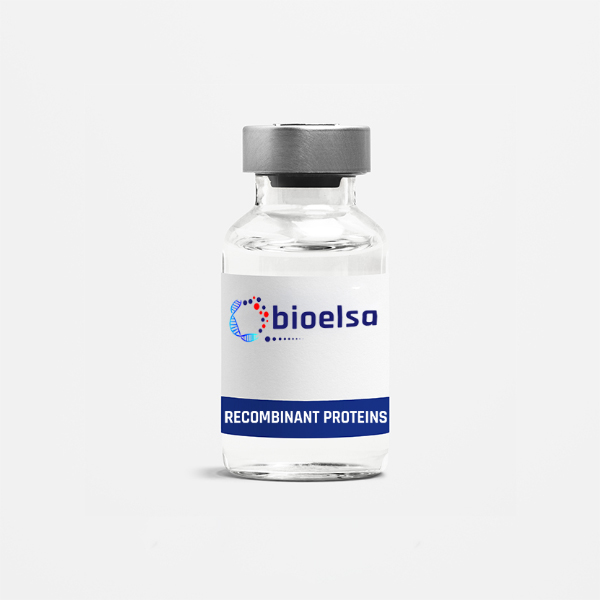| Gene ID |
5155 |
| Accession | P01127 |
| Alternative Name | PDGF subunit B, PDGF-2, Platelet-derived growth factor B chain, Platelet-derived growth factor beta polypeptide, Proto-oncogene c-Sis, NN=Becaplermin<br/>Recombinant Human Platelet-Derived Growth Factor Subunit B (PDGFB) |
| Species | Human |
| Source | E. coli |
| Description | The PDGF family is comprised of five different disulphide-linked dimers of four different polypeptide chains: A, B, C and D (PDGF-AA, PDGF-BB, PDGF-AB, PDGF-CC and PDGF-DD). Synthesized mainly by megakaryocytes, PDGFs are stored in the alpha granules of platelets from which they are released following platelet activation. Functioning as an autocrine and paracrine growth factor, PDGFs are involved in a number of biological processes that include but not limited to hyperplasia, chemotaxis, embryonic neuron development, wound healing and respiratory tubule epithelial cell development. Aberrant expression of PDGFs is observed with vascular proliferative diseases such as atherosclerosis. PDGFs regulate the synthesis of their own receptor and also influence the expression of membrane receptors for IL1, EGF, 5-Hydroxytryptamine, LDL and transferrin. Recombinant human PDGFB is a disulfide-linked homodimer of two B chains. |
| Accession | P01127 |
| Functions | The ED50 as determined by the dose-dependent proliferation of NIH 3T3 cells is <0.5ng/ml |
| Formulation | Lyophilized from a 0.2 ?m filtered solution in PBS |
| Solubility | A quick spin of the vial followed by reconstitution in sterile distilled water to a concentration not less than 0.1 mg/mL. This solution can then be diluted into other buffers. |
| Appearance | Lyophilized Powder |
| Molecular Weight | 12.3 |
| Purity | >95% as determined by SDS-PAGE |
| Concentration | <1.0 EU/μg of recombinant protein as determined by the LAL method. |
| Shipping Condition | Ambient Temperature |
| Storage Condition | The lyophilized protein is stable for at least one year from date of receipt at -70?C. Upon reconstitution, this cytokine can be stored in working aliquots at 2? - 8?C for one month, or at -20?C for six months, with a carrier protein without detectable loss of activity. Avoid repeated freeze/thaw cycles. |
